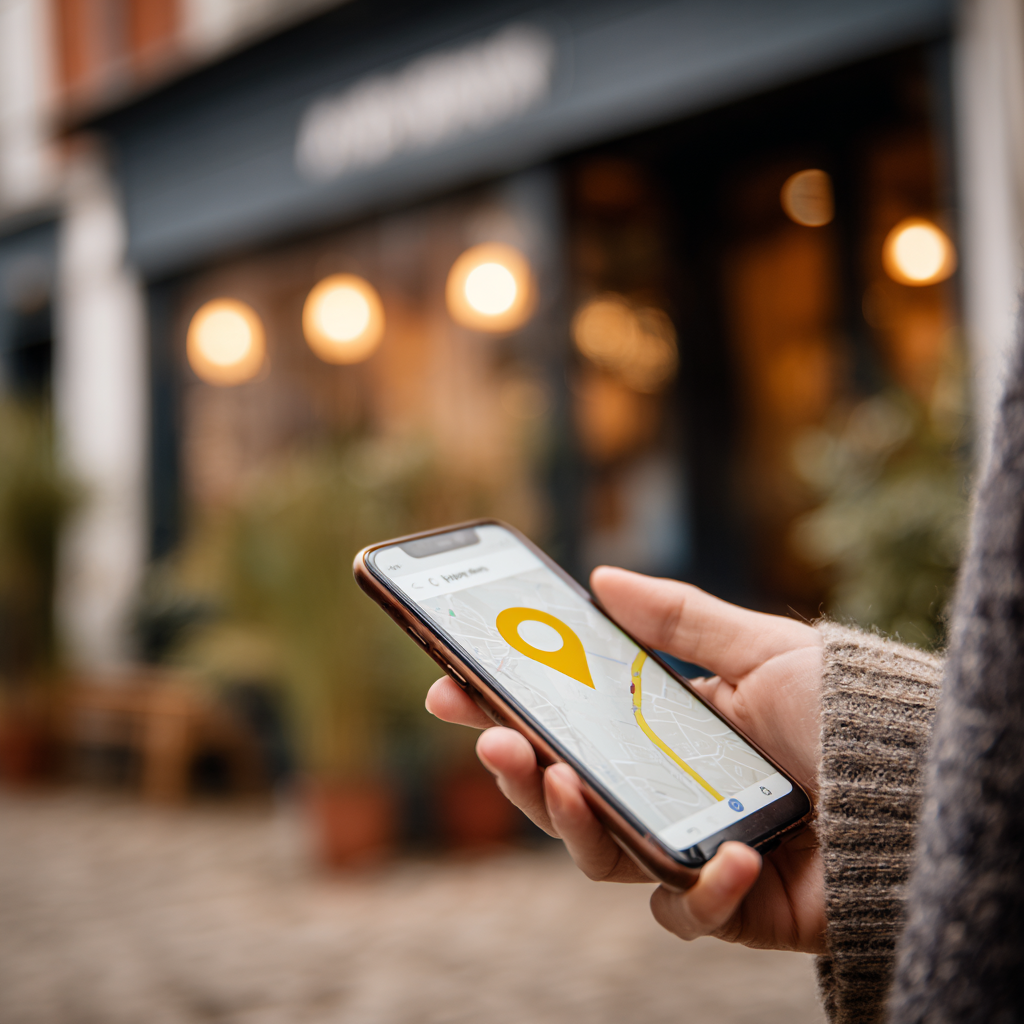If you’re trying to win customers in Salt Lake, Utah County, Davis/Weber, or Summit/Wasatch, your Google Map Pack visibility is make-or-break. Maps is where people with immediate intent decide who to call, where to go, and which brand to trust. Today, we’ll show you the exact playbook we use at Infogenix to help Utah companies climb into the Map Pack—and stay there. If you’re evaluating a digital marketing agency Utah businesses can partner with for end-to-end execution (SEO, PPC, design, analytics), you’re in the right place.
Why the Map Pack is different (and what Google’s really looking for)
Google’s local algorithm leans on three pillars: relevance (how well your profile matches a search), distance (proximity to the searcher or the area they specify), and prominence (signals that you’re a credible, established business). Your job is to amplify what you can control—tight relevance, clear service coverage, site signals that reinforce your profile, and clean location data—so you win as often as possible when the searcher is within your realistic service radius. Our team integrates local SEO with site development and paid media under one roof so those signals reinforce each other instead of competing.
1) Start with the bedrock: your Google Business Profile is your “storefront”
Before you think about content or campaigns, make your profile bulletproof:
- Categories that match intent. Choose a specific primary category (the one that maps to your money service) and add tightly relevant secondaries—don’t shotgun a dozen loosely related options.
- Service areas that you can truly serve fast. If you’re a service-area business, list cities you can reach reliably. Overextending can hurt conversion and confuse Google’s understanding of your footprint.
- Hours, attributes, and accessibility details. Keep them current through holidays and seasonal swings. Utah’s ski season, holiday shopping, and summer tourism create predictable demand spikes—reflect those realities in your profile.
- Consistent NAP everywhere. Your name, address, and phone must match your website and major directories. Inconsistencies dilute local relevance.
This foundational work sounds simple—but gaps here are one of the top reasons good companies never crack the Map Pack. It’s also why our local program prioritizes a structured audit and fixes first.
2) Clean up duplicate and legacy listings (the silent ranking killer)
Nothing confuses local algorithms faster than duplicate or outdated profiles. After moves, rebrands, or departmental experiments, it’s common to find stray listings that siphon authority. We systematically:
- Identify duplicates and request consolidation
- Correct category mistakes and legacy phone numbers
- Align your profile name and website with your real-world branding
This “plumbing” step isn’t glamorous—but in many Utah markets it’s the difference between ranking #3 and disappearing. We handle these consolidations routinely so all your local signals flow to the right place.
3) Make your profile conversion-ready (not just “complete”)
A filled-out profile is table stakes. A conversion-ready profile turns browsers into buyers:
- Services: Add each service you want to rank for with short, benefit-driven blurbs. Mirror the terminology you use on the website to reinforce relevance.
- Photos & short clips: Show the exterior (for easy wayfinding), interior, team, and the service environment. Post consistently—fresh media signals operational health.
- Products/menus where relevant: If you sell packages or bookable offerings, list them with clear titles and calls-to-action.
- Messaging or bookings: Enable if you can respond quickly. Fast replies lift contact rates on mobile.
Because our SEO, design, and PPC teams collaborate directly, we align GBP content with landing pages and ad messaging so the story is consistent from Maps to your site to the call-to-action.
4) Sync your website with your profile (local signals must match)
Google cross-checks your profile against your site. Strengthen that connection:
- Location pages: Create a fast, focused page per location or service-in-city. Include unique copy (coverage areas, landmarks, parking or access notes), embedded map, and click-to-call.
- Schema: Use Organization/LocalBusiness (and appropriate subtypes) with the same NAP, hours, geo-coordinates, and services listed on your profile.
- Internal links: Tie service pages to their nearest location page—and link back—so Google can follow the topical and geographic thread.
- Core Web Vitals: Faster pages support better engagement and conversion, which feeds back into relevance and prominence over time.
We implement these on-site improvements as part of a broader technical SEO program so crawlability, speed, schema, and internal linking reinforce your local presence.
5) Post with purpose and use Q&A strategically
Treat Posts as micro-landing pages for high-intent moments:
- Lead with a clear benefit, include one crisp detail, and finish with a CTA (Call, Book, Learn More).
- Align timing with Utah’s seasonality—storm policies, weekend availability in ski towns, spring maintenance offers, summer travel-friendly info.
- Seed Q&A with the most common questions (timelines, warranties, access/parking, what to bring) and answer from your brand account. Keep responses short, factual, and action-oriented.
A steady cadence here keeps your profile active and gives Google more structured content tied to local intent—while answering friction points that block conversions.
6) Use paid search to accelerate what’s working in Maps
Local SEO and PPC are better together. We use Google Ads to:
- Validate which queries actually convert (feed that intel back into your services list, on-site copy, and Posts).
- Run location extensions and call extensions to put your address, distance, and phone front-and-center in ads.
- Protect high-value ZIPs while new organic pages mature.
One integrated team for SEO + PPC means your tests in paid inform organic—and vice versa—so you make faster, evidence-based decisions across channels.
7) Measure outcomes you can act on (not just “views”)
Rankings are directional; revenue is decisive. Add UTM parameters to your GBP links (website, appointment/menu) so you can see local traffic and conversions in analytics. Monitor:
- Clicks to call and calls from the profile
- Direction requests and website visits
- Button performance (e.g., Book vs. Call)
Our reporting makes changes and outcomes explicit, so you know what we shipped, what moved, and what to double down on next.
8) Multi-location in Utah? Standardize, then localize
For brands operating in SLC, Lehi/Provo, Ogden/Clearfield, and Park City/Heber:
- Create a master playbook (categories, services list, attributes, UTM format, posting cadence) to keep governance tight.
- Localize the final 20%—neighborhood references, seasonal notes (e.g., canyon access, winter hours), localized imagery, and unique offers.
- Coordinate with PPC geographically so brand and non-brand coverage matches each market’s competitiveness.
This balance of central standards and local nuance is where multi-location companies see compounding returns in the Map Pack.
A 90-Day Map Pack Plan (you can start this week)
Days 1–15: Fix the foundation
- Audit categories, NAP, hours, service areas; close gaps immediately
- Add/clean services, attributes, photos; enable messaging/bookings if feasible
- Add UTM tracking to profile links
- On-site: verify location pages, embedded maps, schema, and internal links
Days 16–45: Eliminate noise & reinforce relevance
- Identify and consolidate duplicate or legacy listings
- Align site copy to match GBP services; refresh top service-in-city pages
- Launch weekly Posts tied to seasonal demand; seed/answer top Q&As
- PPC: enable location & call extensions; start testing tight, high-intent ad groups
Days 46–90: Scale what works
- Expand photo/video sets; test Post formats and CTAs
- Add 2–4 new location or service-in-city pages where demand justifies
- Tie analytics to real outcomes (calls, bookings, direction requests) and iterate
- Use PPC search-term reports to refine services list and on-site wording
Expect steady, compounding gains—not overnight flips. Clear actions + clean data = durable Map Pack wins.
Utah-specific opportunities most companies miss
- Seasonal preparedness: Adjust hours, posts, and on-site messaging to ski-weekend surges, spring home-service rush, and summer tourism.
- Wayfinding details: For urban storefronts (Downtown SLC, Sugar House, Provo Center Street), add parking/access notes and street-level photos—tiny changes with outsized conversion impact.
- Service-in-city depth: Rather than generic “Utah” pages, build content for Draper, Sandy, Ogden, Layton, Park City, and Heber with unique copy tied to local use cases.
We fold these Utah nuances into strategy, content, and builds so your profile and pages feel truly local—not just “optimized.”
Why work with Infogenix on Local SEO?
- Full-service, under one roof: Our SEO, PPC, design, and development teams collaborate daily—so technical fixes, content, and ads reinforce each other instead of stalling in handoffs. That integration is why many consider us one of the best long-term partners for Utah companies.
- Established Utah roots: Building and marketing Utah websites since 1998 means we know the regional search patterns—and how to ship improvements quickly.
- Transparent reporting: You’ll always see what changed, what moved, and what’s next.
Ready to claim your spot in the Map Pack?
Tell us your top markets and services, and we’ll map a 90-day plan you can put to work immediately. If you’re searching for a Digital Marketing Agency Utah businesses can trust with both site and local execution, let’s talk. Start a conversation with our team and we’ll get you a clear, prioritized plan for the next quarter.
Quick-Hit Checklist: 12 Tasks to Tackle This Week
- Confirm primary category + 2–3 precise secondaries
- Tighten service-area cities to where you truly operate
- Align NAP across your site and major directories
- Update hours (including holiday/seasonal)
- Add complete services with short, benefit-driven blurbs
- Upload 8–12 high-quality photos (exterior/interior/team/work)
- Enable messaging or bookings (if you can respond fast)
- Add UTM tags to website/appointment links
- Publish two Posts tied to seasonal demand this month
- Seed and answer 3–5 common Q&As
- Identify and request consolidation of duplicates/legacy profiles
- Link Google Ads and enable location + call extensions (if running PPC)
When you’re ready, we’ll help you prioritize, implement, and measure every step so your Maps presence becomes a reliable, compounding source of new customers.


